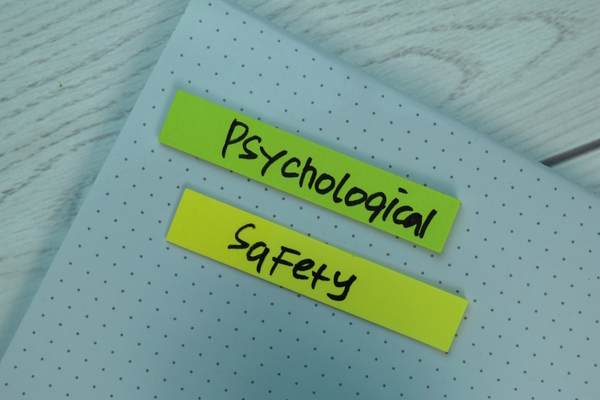Work skills for today and tomorrow
Nelson Sivalingam at HowNow asks whether organisations really understand the skills they need in today’s fast changing business environment

A prescient Forbes piece from 2019 lists the most important skills that an employee needs to survive and thrive in the 21st century. If we’re completely honest, the list could have been written at any time in the last 20 years. Resilience. Agility. The capacity to collaborate and negotiate. No kidding.
The article is still prescient, though, because number one on the list is “learnability”, suggesting that the most critical skill an employee needs in their locker is…the capacity to learn more skills.
We’re entering an era where the fastest learner wins, driven by rapid technological change. Automation is transforming the way we hire and work. By some estimates, a billion people will need upskilling and reskilling over the next five years. And when things move this rapidly, those who adapt quickest will have a huge advantage over their competitors.
It is perhaps true that the world’s biggest organisations can still buy the skills they need, though we know how competitive the talent market is. Acquiring skills in this way can be incredibly expensive. It might be feasible if you’re Google or Amazon. But if your business isn’t quite yet a member of that exclusive club, decisions need to be made. How far do we chase our ideal skills via recruitment? How much can we afford to invest in those highly sought-after people? With certain key skills in such high demand, is it sustainable - or even possible at all - to buy them in?
Take a step back and look at this strategically and it actually boils down to a simple set of questions: which skills do your people need for the coming year; which do they have now; and how are we going to close those gaps?
Which skills do your people need for the year ahead?
Obviously, the answer to this question will vary hugely from business to business, driven by whatever societal, technological or regulatory pressures are most relevant. Everyone will have a different angle on organisational priorities or transformation goals. Perhaps the real point to make here is that transformation is happening far faster than it was ten, or even five years ago. The rate of innovation is only increasing, which makes it all the more important to review your strategic priorities regularly: annually, or even twice-yearly. Not all of us could have predicted the rapid rise and impact of Gen-AI, but some companies have found the agility to pivot quicker than others.
It’s also worth noting that a 2024 survey by the British Chambers of Commerce found that just 19% of UK organisations have a written skills plan in place. Assuming that’s correct, it suggests that the vast majority (81%) are either still not investing in skills at all, or are doing so without any real insight or strategic direction.
Which skills do they have now?
This is slightly more problematic. If you’ve created a clear and comprehensive picture of the current skills within your business, you’re in the minority. And even if you have conducted an audit to pull this vital information together, chances are it’s now sitting in a spreadsheet somewhere, rapidly going out of date.
There are a number of ways to keep on top of this. The very best managers - the ones who take the time for regular development conversations with their team members - will already have a pretty clear idea of how to rank skill levels across their team. Evidence-based 360 reviews can show you the proficiency of skills being applied at work; AI can also surface this info, in even more detail, by crunching productivity data.
How will we close these gaps?
The first port of call for upskilling will naturally be a company’s L&D department. With such an immense breadth of resources to choose from, modern L&D teams are as much the architects of the ecosystem as they are the facilitators of its delivery. The focus should be on connecting people with the right content at the right time - removing the friction, so to speak - rather than simply opening the door to the vast library of knowledge to which we have access.
But even with this focus on curation rather than content, we all know that learning isn’t just about throwing facts at the wall and hoping they stick. We also need great teachers to provide context, guidance and feedback - and in a way that resonates with the learner.
From an employee perspective, this means making sure that learning is directly connected to the work to be done. And that has a huge implication for the examples used, the angles to be emphasised or dialled down and the rate of expected learning. An experienced teacher or coach will do this automatically, but a standard e-learning course leaves all that in the learner’s hands.
AI-enabled learning, by contrast, can replicate the role of a great teacher at scale. It can work with each learner to establish the right cadence for them, drawing on the most relevant examples and monitoring the rate at which the learner progresses. It can understand precisely which skills the business needs and help the learner to acquire them through content, roleplay and interactive feedback. And it is these AI learning agents that represent the last piece of the puzzle: from the content which forms that backbone of learning; to the context which gives it relevance in the real world; and finally to the vital conversation which embeds learning through feedback and practice.
The key to effective L&D: knowing what you don’t know
The skills we don’t have - the things we don’t know - will define our success in the modern knowledge economy. Every company has challenges to face: technology change which may threaten their advantage or disrupt their model; demographic or societal changes which force them to adapt.
The aim of effective L&D, in a skills-based world, is to gain an understanding of what people don’t know so that gaps can be plugged before they become a void. Strategic, skills-led learning will not only highlight knowledge gaps quickly and simply, it will provide a clear path to closing those gaps.
And in a fast-change environment, having the tools to support this will empower people and businesses to upskill at speed and scale.
Nelson Sivalingam is Co-founder and CEO of HowNow
Main image courtesy of iStockPhoto.com and BeritK

Business Reporter Team
Most Viewed
Winston House, 3rd Floor, Units 306-309, 2-4 Dollis Park, London, N3 1HF
23-29 Hendon Lane, London, N3 1RT
020 8349 4363
© 2025, Lyonsdown Limited. Business Reporter® is a registered trademark of Lyonsdown Ltd. VAT registration number: 830519543





